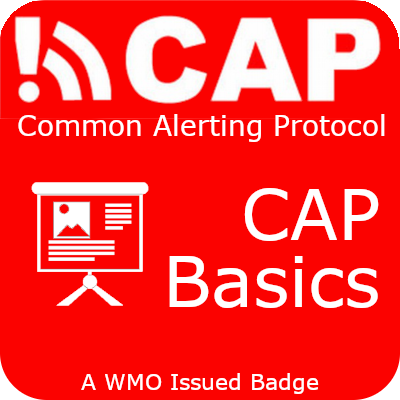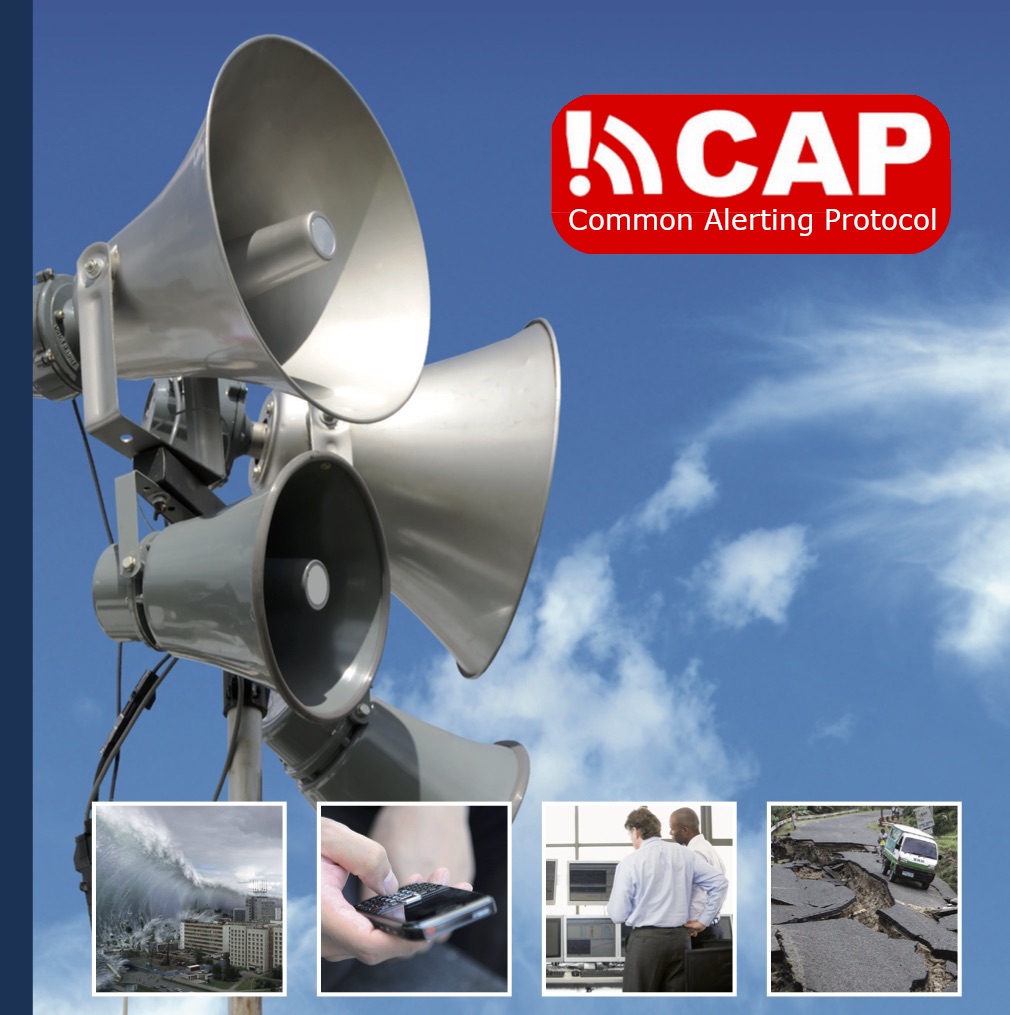Common Alerting Protocol: CAP Basics
Section outline
-
 This course provides an overview of CAP: the benefits for using it; the technology behind it; examples of tools for issuing CAP alerts; and examples of CAP-based alert hubs.
This course provides an overview of CAP: the benefits for using it; the technology behind it; examples of tools for issuing CAP alerts; and examples of CAP-based alert hubs. -
What happens when your hazardous weather alerts go out to the public? How widely are they distributed to the people in the impact zones? What can your organization do to make your alerts easily accessible to the public, the media, online venues, and alerting systems?
-
This 1.5-2 hour, self-directed course is offered through the WMO Education and Training (ETR) programme's course site. All resources, assignments, and assessments are available on this site. Review the following topics to learn how to best participate and successfully complete this course.
-
...alerts need to go out to the public as quickly and as efficiently as possible. The better people are informed about a hazard threat or emergency, the more lives can be saved and resources preserved. And the more targeted the alerts are, the more people in harms way are confident the message is intended precisely for them. CAP is designed to precisely identify the alerting area and to communicate quickly and easily through any communications media, using a format that is universally readable.
-
The following six lessons step through parts of a presentation given by Eliot Christian at a 2018 workshop held at
Centro Regional de Formación Argentina. Eliot highlights the key reasons for implementing CAP, describes how it works, and showcases examples of how it is being used. Within each lesson, you will watch segments of Eliot's recorded presentation, answer questions, and be directed to visit and explore CAP related resources. Before beginning the lessons, you may want to download the following two files. -
This is a PDF file containing presentation notes for the videos used in the following CAP 101 lessons. Having a printed copy is helpful for taking notes.
10.2 MB -
This is a PDF file of the presentation used in the CAP 101 lesson videos. It includes active links to many of the resources cited in the presentation.
14.9 MB -
Final activity: Provide your opinion on the effectiveness of this course for learning about CAP. Your information will be anonymous.
-
Your "Enrollment Key" for the "Guidelines for Implementing CAP Alerts" and the "Issuing CAP Alerts" courses is here: PageThis course is a prerequisite for taking the other two courses in this collection: Guidelines for Implementing CAP Alerts and the Issuing CAP Alerts. By completing this course and the activities listed, you will be able to display this page, which contains your "Enrollment Key". You can find links to these courses and other CAP resources at the CAP Resources Portal.
-

